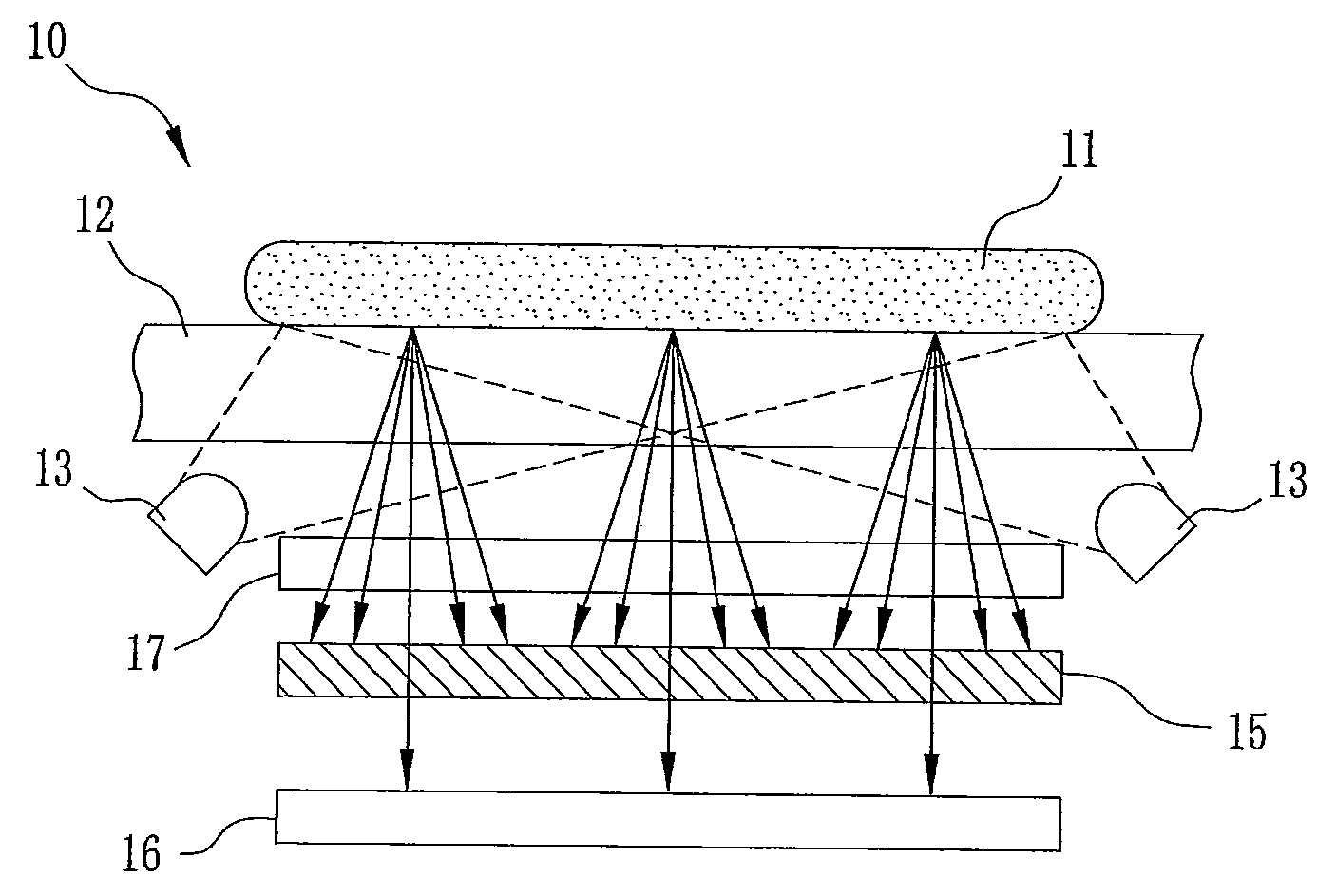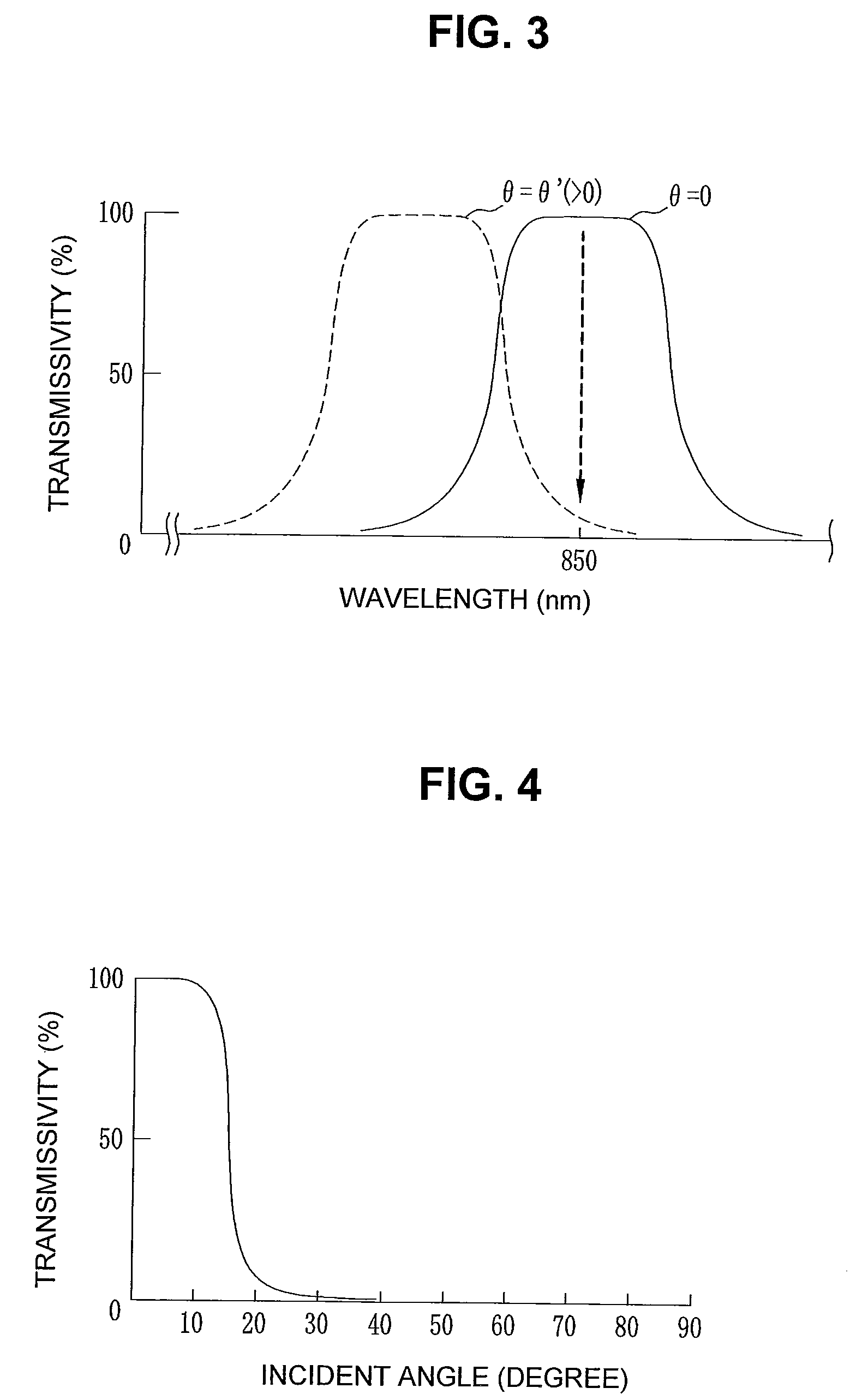Imaging device
a technology of imaging device and irradiation, which is applied in the direction of optical radiation measurement, camera filters, instruments, etc., can solve the problems of unavoidable gap between the object and the photodiode, noise and false signals, and difficulty in further thickness reduction, etc., to suppress the assembling space requirement, suppress the fabrication cost, and satisfy the mass productivity
- Summary
- Abstract
- Description
- Claims
- Application Information
AI Technical Summary
Benefits of technology
Problems solved by technology
Method used
Image
Examples
first embodiment
[0036]As shown in FIG. 1, a close contact type imaging device 10 is an imaging device for acquiring an image of an object 11 close to the image sensor 16 and, in particular, an imaging device suitable for acquiring an image of an object 11 almost in close contact to the image sensor 16. The close contact type imaging device 10 has a protection cover 12, an LED 13, an angle limiting filter 15 (optical filter), and an image sensor 16. The protection cover 12 is composed of a transparent glass plate and protects from scratches or dust the angle limiting filter 15 and the image sensor 16 arranged below. Further, the object 11 whose image is to be acquired is placed directly on the protection cover 12.
[0037]The LED 13 emits infrared light having a wavelength of 850 nm, and illuminates the object 11 uniformly from a location under the protection cover 12. The infrared light emitted from the LED 13 is scattered in accordance with the absorption coefficient and the reflectivity for infrared...
example 1
[0050]As shown in Table 1, the angle limiting filter 15 of low directivity was fabricated such that a dielectric multilayer film 27 composed of tantalum pentoxide (Ta2O5) having a refractive index of 2.1136 and silicon oxide (SiO2) having a refractive index of 1.4525 was provided on a glass substrate 26 having a refractive index of 1.51. The dielectric multilayer film 27 of the angle limiting filter 15 of low directivity was composed of a stack of 66 layers fabricated by alternately stacking tantalum pentoxide films and silicon oxide films each having an optical film thickness 0.25 to 1.0 at a reference wavelength of 850 nm.
TABLE 1MaterialntAir1.00001Ta2O52.11360.252SiO21.45250.023Ta2O52.11360.254SiO21.45250.505Ta2O52.11360.256SiO21.45250.257Ta2O52.11360.758SiO21.45250.259Ta2O52.11360.2510SiO21.45250.2511Ta2O52.11360.7512SiO21.45250.2513Ta2O52.11360.2514SiO21.45250.2515Ta2O52.11360.5016SiO21.45250.2517Ta2O52.11360.2518SiO21.45250.2519Ta2O52.11360.2520SiO21.45250.2521Ta2O52.11360.252...
example 2
[0055]As shown in Table 2, the angle limiting filter 15 of high directivity was fabricated such that a dielectric multilayer film 27 composed of tantalum pentoxide having a refractive index of 2.1136 and silicon oxide having a refractive index of 1.4525 was provided on a glass substrate 26 having a refractive index of 1.51. The dielectric multilayer film 27 of the angle limiting filter 15 of high directivity was composed of a stack of 90 layers or the like fabricated by almost alternately stacking tantalum pentoxide films and silicon oxide films each having an optical film thickness 0.25 to 1.5 at a reference wavelength of 850 nm.
TABLE 2MaterialntAir1.00001SiO21.45250.3035122Ta2O52.11360.0943753Ta2O52.11360.254SiO21.45250.255Ta2O52.11360.256SiO21.45250.257Ta2O52.14360.258SiO21.45250.259Ta2O52.11360.2510SiO21.45250.2511Ta2O52.11360.2512SiO21.45250.2513Ta2O52.11360.2514SiO21.45250.2515Ta2O52.11360.2516SiO21.45250.2517Ta2O52.11361.5018SiO21.45250.2519Ta2O52.11360.2520SiO21.45250.2521Ta...
PUM
 Login to View More
Login to View More Abstract
Description
Claims
Application Information
 Login to View More
Login to View More - R&D
- Intellectual Property
- Life Sciences
- Materials
- Tech Scout
- Unparalleled Data Quality
- Higher Quality Content
- 60% Fewer Hallucinations
Browse by: Latest US Patents, China's latest patents, Technical Efficacy Thesaurus, Application Domain, Technology Topic, Popular Technical Reports.
© 2025 PatSnap. All rights reserved.Legal|Privacy policy|Modern Slavery Act Transparency Statement|Sitemap|About US| Contact US: help@patsnap.com



